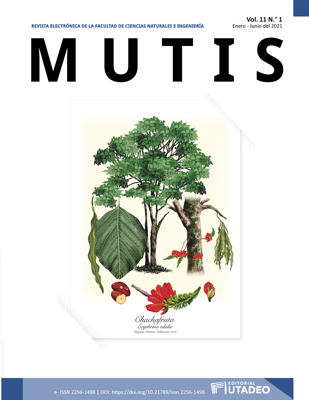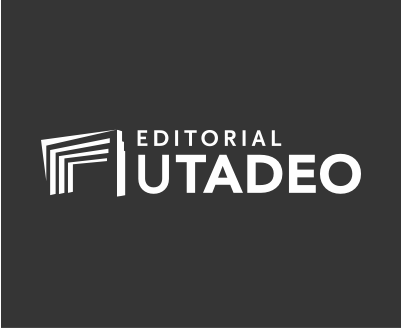
Esta obra está bajo una licencia internacional Creative Commons Atribución-NoComercial-CompartirIgual 4.0.
Esta obra está bajo una licencia internacional Creative Commons Atribución-NoComercial-CompartirIgual 4.0.
Resumen
Esta investigación evaluó la aplicación de fertilizantes que contenían elementos menores como mejoradores de la calidad molinera del arroz (Oryza sativa L.) en un suelo clasificado como Typic Xerofluvents. Se valoró un área de 2,5 ha, divididas en cuatro piscinas cultivadas con arroz variedad Fedearroz 2000. Se utilizó un diseño de bloques completos al azar con cinco tratamientos y cuatro repeticiones. Las variables de producción evaluadas fueron: densidad de plantas (46,27 ± 320 plantas/m2), macollamiento (59,48 ± 821,26 macollas/m2), número panículas/área (8,53 ± 440 panículas/m2), número espiguillas/panícula (2,76 ± 12,3 espiguillas/panícula), número de granos totales (15,44 ± 138,77 granos), número de granos llenos (7,88 ± 116 granos) y número de granos vanos (19,88 ± 22,28 granos). Para evaluar el componente de molinería se utilizaron 500 gramos de granos y se valoraron las siguientes variables: porcentaje de vaneamiento (15,24 ± 18,48), masa blanca (70,57 ± 70,68), grano entero (446,9 ± 59,65), cristal (176,93 ± 25,24 %), harina (79 ± 12,82), cáscara (7,89 ± 20,85) y grano yesado (82,08 ± 2,08). Para determinar el rendimiento (37,19 ± 7.689 Kg/ha) se cosechó y se pesó cada tratamiento por separado. Se presentaron diferencias significativas (p < 0,0001) entre los tratamientos, siendo T2 (fertilización tradicional de NPK + fertilización edáfica con elementos menores) el que presentó mejor comportamiento entre variables de producción, mientras que T5 (fertilización tradicional de NPK + fertilización foliar con elementos menores + fertilización foliar con silicio) reportó las mejores variables de molinería. La fertilización con elementos menores contribuye a mejorar la calidad molinera y el rendimiento del arroz, puesto que fortalece el sistema inmune de la planta, combate agentes bióticos y evita los granos vacíos.
Citas
Ahmad, W., Niaz, N., Kanwal, S., & Khalid, M. (2009). Role of boron in plant growth: A review. J Agric Res., 47(3), 329-338.
Alamdari, M., & Mobasser, H. (2014). The effect of macro and micro-nutrient fertilizers on yield and yield attributes of rice in a calcareous soil. American Journal of Experimental Agriculture, 4(12), 1604-1615. https://doi.org/10.9734/ajea/2014/3536
Alshaal, T., & El-Ramady, H. (2017). Foliar Application: from Plant Nutrition to Biofortification. The Environment, Biodiversity & Soil Security, 1, 71-83. https://doi.org/10.21608/jenvbs.2017.1089.1006
Álvarez, J., Daza, M., & Mendoza, C. (2008). Aplicación de un fertilizante enriquecido con silicio y materia orgánica en arroz (Oryza sativa L) cultivado en Ibagué y el Guamo (Tolima, Colombia). Revista Facultad Nacional Agronomía Medellín, 61(2), 4605-4617.
Ashrafi, E., Pirdashti, H., & Niknejhad, Y. (2014). Effect of iron, zinc and silicon application on quantitative parameters of rice (Oryza Sativa L. CV. Tarom Mahalli). Intl J Farm & Alli Sci., 3(5), 529-533.
Balindong, J. L., Ward, R. M., Liu, L., Rose, T. J., Pallas, L. A., Ovenden, B. W., Snell, P. J., & Waters, D. L. (2018). Rice grain protein composition influences instrumental measures of rice cooking and eating quality. Rev. Cereal, 79(18), 35-42. https://doi.org/10.1016/j.jcs.2017.09.008
Barona, E. (2010). Importancia de la semilla de arroz. Arroz, 58(489), 15-21.
Bashir, K., Takahashi, R., Nakanishi, H., & Nishizawa, N. (2013). The road to micronutrient biofortification of rice: Progress and prospects. Frontiers in Plant Science, 4(15), 1-7. https://doi.org/10.3389/fpls.2013.00015
Botta, G. F., Tolón-Becerra, A., Lastra-Bravo, X., Hidalgo, R., Rivero, D., & Agnes, D. (2015). Alternatives for handling rice (Oryza sativa L.) straw to favor its decomposition in direct sowing systems and their incidence on soil compaction. Geoderma, 239-240, 213-222. https://doi.org/10.1016/j.geoderma.2014.10.021
Bouis, H., & Saltzman, A. (2017). Improving nutrition through biofortification: A review of evidence from HarvestPlus, 2003 through 2016. Global Food Security, 12, 49-58. https://doi.org/10.1016/j.gfs.2017.01.009
Cakmak, I., & Kutman, U. (2017). Agronomic biofortification of cereals with zinc: A review. European Journal of Soil Science, 69(1), 172-180. https://doi.org/10.1111/ejss.12437
Das, J., Salam, R., Kumar, R., & Bhutta, Z. (2013). Micronutrient fortification of food and its impact on woman and child health: A systematic review. Systematic Reviews, 2, 67. https://doi.org/10.1186/2046-4053-2-67
Domínguez, A., & Muñoz, O. (2012). Evaluación de la calidad molinera y dimensiones de los granos de dos variedades de arroz y sus varietales de arroz maleza. Rev. Agronomía Tropical Argentina, 2(12), 5-6.
Dutta, S., Das, S., Pale, G., Iangrai, B., Aochen, C., Rai, M., & Pattanayak, A. (2016). Current status and future prospects of research on genetically modified rice: A review. Agricultural Reviews, 37(1), 10-18. https://doi.org/10.18805/ar.v37i1.9259
Fairhurst, T. H., & Witt, C. (2002). Guía práctica para el manejo de nutrientes. Postash & Phosphate Institute (PPI), Potash & Phosphate Institute of Canada (PPIC), & International Rice Research Institute (IRRI).
Food and Agriculture Organization of the United Nations [FAO]. (2009). Global agriculture towards 2050: High Level Expert Forum - How to Feed the World in 2050. FAO http://www.fao.org/fileadmin/templates/wsfs/docs/Issues_papers/HLEF2050_Global_Agriculture.pdf
Food and Agriculture Organization of the United Nations [FAO]. (2014). A regional rice strategy for sustainable food security in Asia and the Pacific. FAO.
Gnanamanickam, S. (2009). Rice and its importance to human life. Prog Biol Con., 8, 1-11. https://doi.org/10.1007/978-90-481-2465-7_1
Guillermo, S., Acosta, C., Cleva, M., & Gonzáles, A. (2012). Sistema de control de calidad de granos de arroz pulidos empleando visión por computadora. XIV Workshop de Investigadores en Ciencias de la Computación. Universidad Nacional de Misiones. http://sedici.unlp.edu.ar/bitstream/handle/10915/18840/Sistema+de+control+de+calidad+de+granos+de+arroz+pulidos.pdf;jsessionid=69E2259FFC4A7D6F3899E8F1ED4D7C7E?sequence=1
Hafeez, B., Khanif, Y., & Saleem, M. (2013). Role of zinc in plant nutrition. A review. American Journal of Experimental Agriculture, 3(2), 374-391. https://doi.org/10.9734/AJEA/2013/2746
Hansch, R., & Mendel, R. (2009). Physiological functions of mineral micronutrients (Cu, Zn, Mn, Fe, Ni, Mo, B, Cl). Current Opinion in Plant Biology, 12, 259-266. https://doi.org/10.1016/j.pbi.2009.05.006
Hernández-Rodríguez, A., Rives-Rodríguez, N., Acebo-Guerrero, Y., Diaz-de-la-Osa, A., Heydrich-Pérez, M., & Divan-Baldani, L. (2014). Potencialidades de las bacterias diazotróficas asociativas en la promoción del crecimiento vegetal y el control de Pyricularia oryzae (Sacc.) en el cultivo del arroz (Oryza sativa L.). Revista de Protección Vegetal, 29(1), 1-10.
International Food Policy Research Institute [IFPRI]. (2014). Global nutrition report 2014: Actions and accountability to accelerate the world’s progress on nutrition. IFPRI. https://doi.org/10.2499/9780896295803
Jin, Z., Minyan, W., Lianghuan, W., Jiangguo, W., & Chunhai, S. (2008). Impacts of combination of foliar iron and boron application on iron biofortification and nutritional quality of rice grain. Journal of Plant Nutrition, 31, 1599-1611. https://doi.org/10.1080/01904160802244803
Jo, G., & Todorov, T. I. (2019). Distribution of nutrient and toxic elements in brown and polished rice. Rev. Food Chemistry., 289(2), 360-368. https://doi.org/10.1016/j.foodchem.2019.03.040
Kato, Y., & Katsura, K. (2014). Rice adaptation to aerobic soils: Physiological considerations and implications for agronomy. Plant Production Sc., 17(1), 1-12. https://doi.org/10.1626/pps.17.1
Kumar, S. (2014). Role of micronutrient in rice cultivation and management strategy in organic agriculture. A reappraisal. Agricultural Sciences, 5, 765-769. https://doi.org/10.4236/as.2014.59080
Kumar, D., Singh, Sh., Singh, Sw., Mishra, S., Chauhan, D., & Dubey, N. (2015). Micronutrients and their diverse role in agricultural crops: Advances and future prospective. Acta Physiol Plant., 37, 139. https://doi.org/10.1007/s11738-015-1870-3
Larios, A., Porcayo, J., & Poggi, H. (2010). Obtención de una harina de pulido de arroz desengrasada con bajo contenido de fibra neutro detergente. Rev. Food Chemistry Colombia, 1(22), 3-5.
Livore, A. (2013). Calidad industrial y culinaria del arroz. IDIA XXI, 6, 190-194
Martínez, E., Pinciroli, M., & Vidal, V. (2010). Proteínas de arroz propiedades estructurales y funcionales. Rev. Argentina, 2(2),67-69.
Meena, N., & Fathima, P. (2017). Nutrient uptake of rice as influenced by agronomic biofortification of Zn and Fe under methods of rice cultivation. Int J Pure App Biosci., 5(5), 456-459. https://doi.org/10.18782/2320-7051.3027
Mejía, M. S., & Menjivar, J. C. (2010). Nutrición mineral de arroz. En V. M. Degiovanni-Beltramo, C. P. Martínez-Racines, & F. Motta (eds.). Producción eco-eficiente del arroz en América Latina. Centro Internacional de Agricultura Tropical (CIAT).
Mercado, S., Caleño, J., & Rozo, L. (2020). Improvement of the methodology of the tetrazolium test using different pretreatments in seeds of the genus Epidendrum (Orchidaceae). Journal of Seed Science, 42, e202042013. https://doi.org/10.1590/2317-1545v42231028
Miranda, E., & Ruíz, R. (2015). Análisis proximal de granos de arroz, frijol, maíz y café comercializados en el mercado. Revista Roberto Huembes de Managua, 6(18), 2-9.
Mohanty, S. (2013). Trends in global rice consumption. Rice Today, 12(1), 44-45.
Muthayya, S., Sugimoto, J., Montgomery, S., & Maberly, G. (2014). An overview of global rice production, supply, trade, and consumption. Ann. N. Y. Acad. Sci, 1324, 7-14. https://doi.org/10.1111/nyas.12540
Phattarakul, N., Rerkasem, B., Li, L., Hu, L., Zou, C., Ram, H., Sohu, B., Kang, B., Surek, H., Kalayci, M., Yazici, A., Zhang, F., & Cakmak, I. (2012). Biofortification of rice grain with zinc through zinc fertilization in different countries. Plant Soil, 361, 131-141. https://doi.org/10.1007/s11104-012-1211-x
Radhika, K., Hemalatha, S., Maragatham, S., & Praveena, S. (2013). Effect of foliar application of micronutrients on the yield components of rice and soil available micronutrients status. Asian Journal of Soil Science, 8(2), 419-421.
Ramírez, E., Caraballo, R., & Medina, V. (2017). Efecto de la distancia entre plantas y la época de siembra en las características morfológicas de la panícula de la planta de arroz (O. sativa L.). Instituto de Investigaciones del Arroz.
Rives, N., Acebo, Y., & Hernández, A. (2007). Bacterias promotoras del crecimiento vegetal en el cultivo del arroz (Oryza sativa L.). Perspectivas de su uso en Cuba. Cultivos Tropicales, 28(2), 29-38.
Rodríguez-Araujo, E. A., Bolaños-Benavides, M. M., & Menjivar-Flores, J. C. (2010). Efecto de la fertilización en la nutrición y rendimiento de ají (Capsicum spp.) en el Valle del Cauca, Colombia. Acta Agronómica, 59(1), 55-64. https://www.redalyc.org/articulo.oa?id=1699/169916223005
Roholla, S., Shahsavari, M., & Rezaei, M. (2011). A general overview on manganese (Mn) importance for crops production. Australian Journal of Basic and Applied Sciences, 5(9), 1799-1803.
Rout, G., & Sahoo, S. (2015). Role of iron in plant growth and metabolism. Reviews in Agricultural Science, 3, 1-24. https://doi.org/10.7831/ras.3.1
Saha, S., Chakraborty, M., Padhan, D., Saha, B., Murmu, S., Batabyal, K., Seth, A., Hazra, G., Mandal, B., & Bell, R. (2017). Agronomic biofortification of zinc in rice: Influence of cultivars and zinc application methods on grain yield and zinc bioavailability. Field Crops Research, 210, 52-60. https://doi.org/10.1016/j.fcr.2017.05.023
Salazar, S. A., Botello, H., & Quintero, J. (2020a). Optimización de la prueba de tetrazolio para evaluar la viabilidad en semillas de Solanum lycopersicum L. Ciencia & Tecnología Agropecuaria, 21(3). https://doi.org/10.21930/rcta.vol21_num3_art:1344
Salazar, S. A., Quintero, Rojas, J. (2020b). Optimization of the tetrazolium test in three species of orchids of the Andean forest. Australian Journal. Crop Sci, 14(5), 822-830. https://doi.org/10.21475/ajcs.20.14.05.p2276
Salazar-Mercado, S., Quintero-Caleño, Q., & Rojas-Suárez, J. (2020) Determinación de la viabilidad de semillas de Capsicum annuum L. utilizando la prueba de tetrazolio. Aibi Revista Investig Adm Ing., 8(3), 7-12. https://doi.org/10.15649/2346030X.718
Serraj, R., McNally, K., Slamet, I., Kohli, A., Haefele, S., Atlin, G., & Kumar, A. (2011). Drought resistance improvement in rice: An integrated genetic and resource management strategy. Plant Production Science, 14(1), 1-14. https://doi.org/10.1626/pps.14.1
Shayganya, J., Peivandya, N., & Ghasemi, S. (2012). Increased yield of direct seeded rice (Oryza sativa L.) by foliar fertilization through multi-component fertilizers. Archives of Agronomy and Soil Science, 58(10), 1091-1098. https://doi.org/10.1080/03650340.2011.570336
Siddika, M., Abedin, M., Sharmin, T., Hanif, M., & Chandra, P. (2016). Effect of different micronutrients on growth and yield of rice. International Journal of Plant and Soil Science, 12(6), 1-8. https://doi.org/10.9734/IJPSS/2016/28707
Siebenmorgen, T. (2013). Laboratory measurement of rice milling yield. En J. T. Hardke (ed.), Rice production handbook (pp. 167-173). University of Arkansas.
Virgili, A. (1996). Introducción a la fertilización con microelementos. Welgro Micromix, 1(2), 3-10.
Yamasaki, H., Pilon, M., & Shikanai, T. (2008). How do plants respond to copper deficiency?. Plant Signaling & Behavior, 3(4), 231-232. https://doi.org/10.4161/psb.3.4.5094
Yuan, L., Wu, L., Yang, C., & Lv, Q. (2012). Effects of iron and zinc foliar applications on rice plants and their grain accumulation and grain nutritional quality. J Sci Food Agric., 93(2), 254-261. https://doi.org/10.1002/jsfa.5749
Yruela, I. (2005). Copper in plants. Braziliam Journal of Plant Physiology, 17(1), 145-156. https://doi.org/10.1590/S1677-04202005000100012
Zhang, C., Zhao, W., Gao, A., Su, T., Wang, Y., Zhang, Y., Zhou, X., & He, X. (2017). How could agronomic biofortification of rice be an alternative strategy with higher cost-effectiveness for human iron and zinc deficiency in China?. Food and Nutrition Bulletin, 39(2), 246-259. https://doi.org/10.1177/0379572117745661
Descargas
Datos de publicación
Perfil evaluadores/as N/D
Declaraciones de autoría
- Sociedad académica
- Universidad de Bogotá Jorge Tadeo Lozano
- Editorial
- Universidad de Bogotá Jorge Tadeo Lozano

 PDF
PDF
 FLIP
FLIP
 XML
XML













